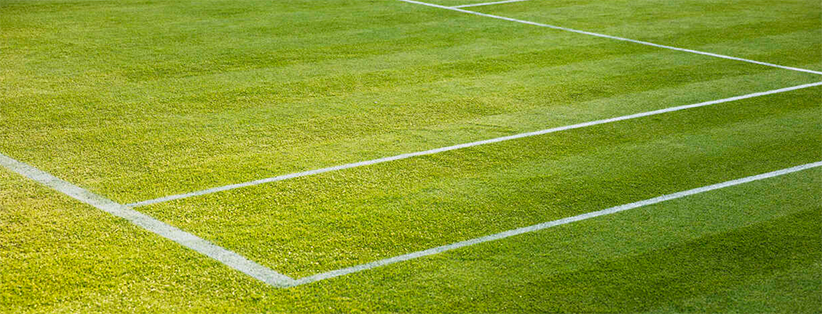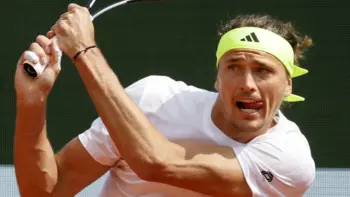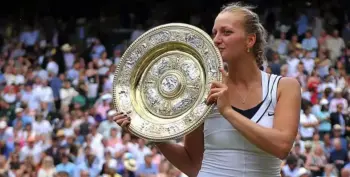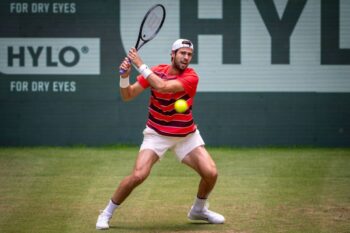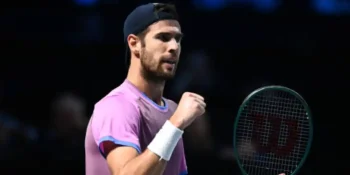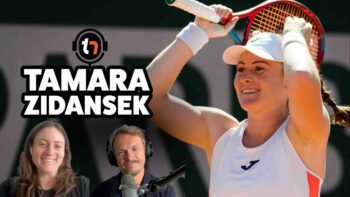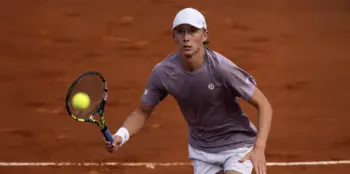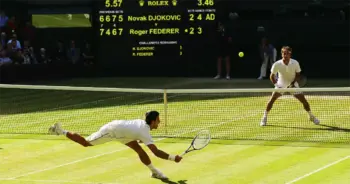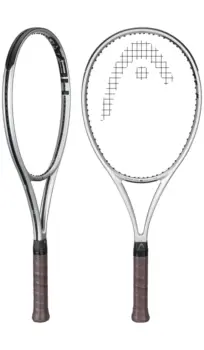The red dirt of Paris is well and truly in the rear vision mirror now. As we approach the end of June, the ATP and WTA Tours are at the halfway point of the grass court season as well.
Observant tennis fans may have noticed a shift in the names present at the business end of tournaments over the past fortnight. Why is it that some players are performing better on the green surfaces of Europe, as opposed to on clay or hard courts? What is it about grass that means some thrive, and others struggle?
Read on as we break down the ins and outs of success on grass courts in tennis. We look at what makes grass different to other surfaces, and dive into why some players are better on the lawn. From play style, through to movement, experience, adaptation and belief.
What makes grass different to other surfaces
First thing’s first: a quick refresher on the unique nature of grass courts.
At the risk of stating the obvious, grass courts are made of grass. This is significant because compared to clay or hard courts, a grass surface offers the least amount of friction for both balls, and shoes.
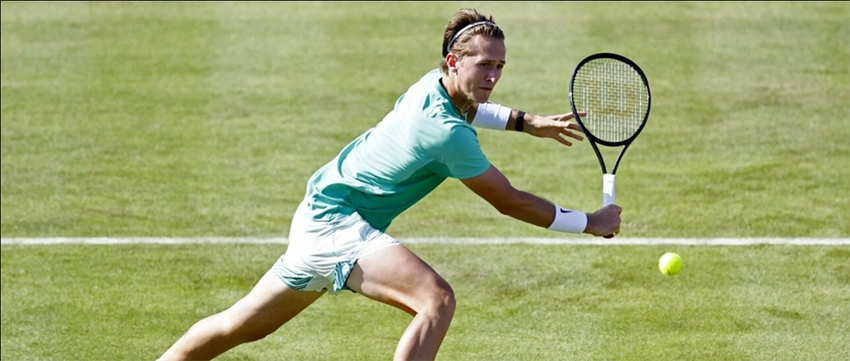
What does this mean? Two big things.
Firstly, upon impact with a grass court, tennis balls bounce up less, and continue on faster, compared to other surfaces. In layman’s terms, the ball skids through quickly.
Imagine throwing your phone onto carpet, versus a silk pillowcase. Chances are, your phone will stop quickly on the carpet, but slide off the pillowcase. It’s the same for tennis balls on different surfaces, with grass being the silk pillowcase.
Secondly, players’ shoes are unable to grip grass courts as effectively as other surfaces. There’s simply less traction between court and shoe due to the reduced friction of grass. Read: it’s slippery.
Think of trying to run on ice. There’s very little traction, so sudden movements aren’t your friend. Instead, small steps, gliding, and a strong sense of balance are crucial. Same thing with grass.
Other subtle differences result from grass being a natural surface, such as a variable bounce.
Bottom line though, the height and pace of bounce, plus type of movement, are the two main differentiators between grass and other courts.
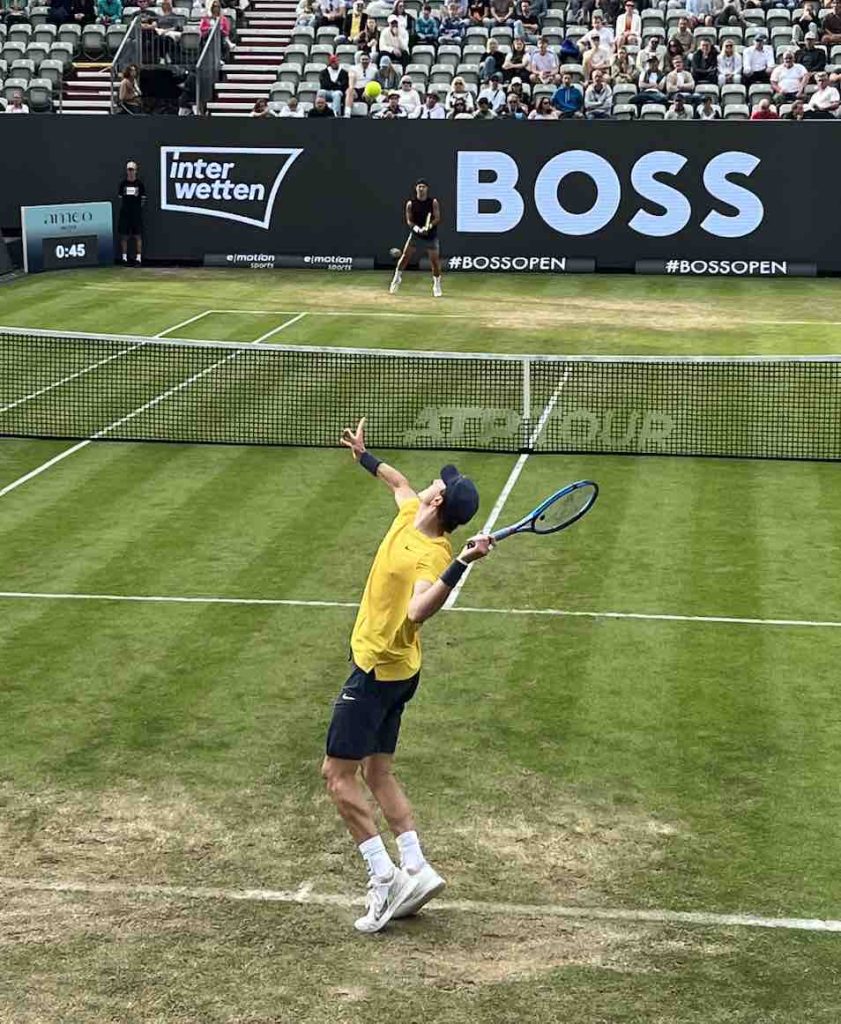
Why some players succeed on grass more than others
So how do these differences relate to the success of some players on grass, more than others?
How is it that Casper Ruud, for example, made back-to-back French Open finals, yet fell in the second round of Wimbledon those same years? Or Adrian Mannarino twice lost in the first round of Roland-Garros, but went on to make the round of 16 at Wimbledon a month later?
Wind back the clock even further, and there are plenty more examples of imbalanced success on the different surfaces. Just look at Pete Sampras–the 14-time Grand Slam champion won seven of his titles at Wimbledon, yet never even made the final of Roland-Garros.
We believe there are five key reasons that explain the difference in players’ success on grass and other surfaces.
- Familiarity
Firstly, the most basic of explanations is familiarity. Because the grass season is only five weeks long, some players genuinely have very little exposure on the surface.
Even Carlos Alcaraz, 2023 Wimbledon champion, has only played 20 matches on grass in his professional career. Read more about the best surface for Alcaraz.
Where players grew up has a reasonable influence on their access to grass courts as well. South American players, for example, typically grow up playing on clay courts. Americans, on the other hand, are raised mainly on hard courts.
British and some European players will have more exposure to grass throughout their younger years. When they turn professional and hit the five week grass court season, they are already much more familiar with the surfaces than others.
This isn’t a perfect explanation, however. Someone like Matteo Berrettini grew up playing on clay, and is now considered as a grass specialist. Likewise, Argentinian Juan Martin del Potro had little exposure to the surface growing up, yet made the Wimbledon semi-finals in 2013.
- Movement
One of the biggest aspects of grass that separates players is their movement.
As touched on earlier, it’s a completely different style of movement that’s required. Small steps, different type of sliding, lots of staying low and having mobility with hips and knees.
Movement on grass is a double-edged sword.
A player who has fantastic technique is able to cover the court well, quickly getting to the net and changing direction with ease. Those who struggle with their movement will not only have less court coverage, but they’ll constantly be second-guessing their shots.
Casper Ruud put it best last year, when asked about how he finds moving on grass:
“The toughest thing is that especially with my forehand, I use my legs a lot, I use a lot of force from my legs,” Ruud explained.
“Let’s say I’m running out to my forehand, I push off with my right leg mostly. Then when I land, I’m depending on that first step being quite quick and recovering back to the middle”.
“Every time I try to do that on grass, I have a feeling when I land I’m going to slip and have a nasty fall. I don’t dare to play the same shots I do on hard court and clay.”
With movement flowing on to every other aspect of a players’ game, the ability to do so effectively on grass is a huge differentiator.
- Play style
Speaking of players’ games, some have play styles that are naturally better suited to grass. Elements that influence success on grass include:
- Serve. Big, flat serves are very effective on grass due to the low, fast bounce. Raw power is rewarded, with double the number of aces at Wimbledon compared to the French Open on average. Slice serves are also hard to handle as they skid even more than usual.
- Volleying. Coming to the net is crucial in grass court tennis. Because the ball stays low and skids on, simply winning rallies from the back of the court is not a reliable strategy. Players must be aggressive and approach the net more, so those who have better touch in the front of the court have an advantage.
- Slice. While the slice is often a fallback shot on other surfaces, it becomes a real weapon on grass. Those who have a strong slice in their arsenal can use it to great effect, as the ball skids on and is hard to return well.
- Grip. Grass does not reward top spin in the same way that other surfaces do. With balls sitting up less, and heavily spun shots being less effective, those who use more extreme grips to generate spin will struggle. For example, returning a low bounce with a Western forehand grip is a challenge, compared to a more open grip.
- Court position. Players who stand well behind the baseline as a default can struggle on grass. The bounce means players have less time to react, with balls not sitting up to be hit as they do on other surfaces. Instead, it’s important to take the ball on the rise in grass court tennis. Those who have naturally aggressive games and already do this have an advantage.
Broadly speaking, players with big serves, great hands at net, a wicked slice and an aggressive play style will fare much better on grass. Those who rely on heavy spin and grinding opponents down from the baseline will have a harder time.
- Ability to adapt
But hang on, what about Rafael Nadal? Doesn’t he hit with heavy spin from behind the baseline? And didn’t he win Wimbledon twice?
Absolutely. In fact, even Novak Djokovic, winner of seven Wimbledons in the past 13 years, doesn’t have a style of play that is naturally suited to grass. Many don’t nowadays, given how short the season is.
That’s why those who succeed on grass are all brilliant at one thing: adapting.
With such a short turnaround between the two most contrast surfaces in the tennis calendar, the ability to adjust play style and patterns of movement is crucial for success on grass.
It is possible: Nadal, Djokovic and Federer have all won both Roland-Garros and Wimbledon in the same year. However, it’s a fine art that not many have mastered.
- Desire and belief
Closely related to the ability to adapt on grass, is the desire to do so.
Simply put, some players just don’t try.
This is no disrespect to them whatsoever. Some players just prefer to focus on other surfaces, or use the grass season as an opportunity to rest. Here we list some players that might surprise during the grass tournaments coming up this year.
It just so happens that these are usually the players who naturally aren’t as set up to succeed on grass as others. When they don’t prioritize grass or have a desire to improve their games, there’s less chance they’ll be able to succeed.
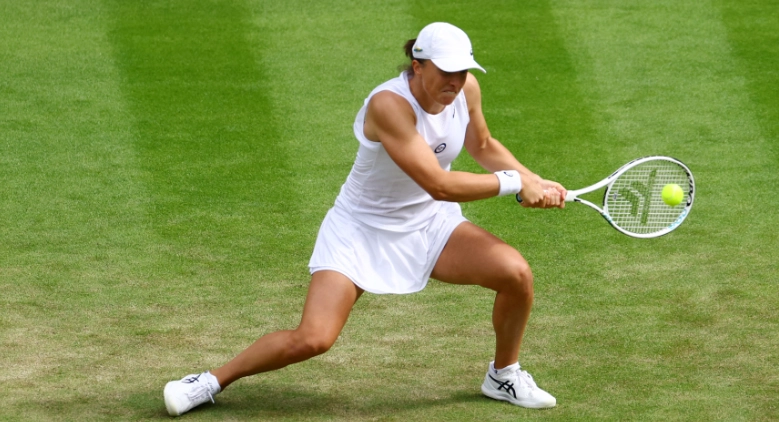
Take Iga Swiatek, for example (image above). She’s a natural clay court player, with heavy topspin and a great back-of-court game. There’s little doubt that Iga could be a strong grass court player if she wanted to, but it seems as though she doesn’t.
However, after winning Madrid, Rome and Roland-Garros, the Pole has opted to not play a single warm up event ahead of Wimbledon. Likewise with Ruud, who regularly only plays Wimbledon on grass each year.
This choice not to prioritize grass can also lead to a lack of belief. When little preparation has been done, and a player’s internal narrative is that they aren’t a good grass court player, it can often become a self-fulfilling prophecy.
Just ask Ruud, who described world No 142 Liam Broady as “a much better grass court player than myself” when he lost to the Brit as the No 4 seed at Wimbledon in 2023.
What has your experience been playing on grass and what players will dominate the grass in 2024? Are you more of a Ruud or a Mannarino? Let us know in the comments below!
